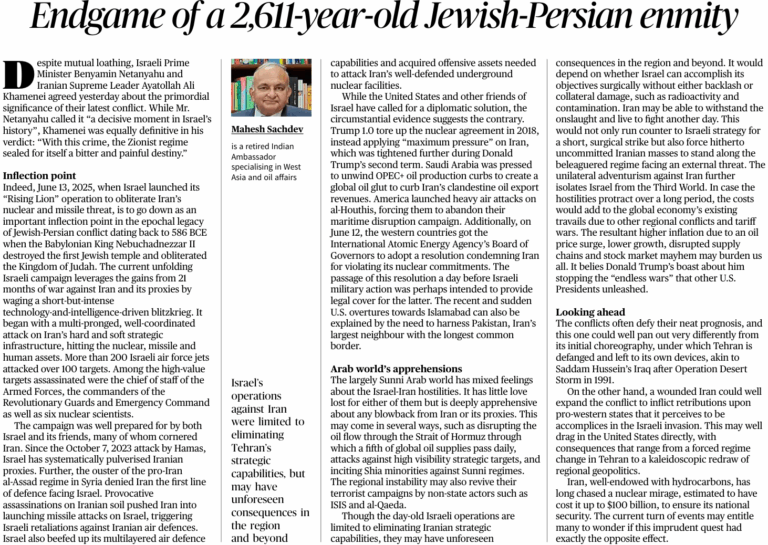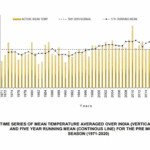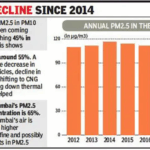India Marks a Relative Decline in Gender Parity, Ranks 131 Worldwide
Why in the News?
The World Economic Forum’s Global Gender Gap Report 2025, released recently, has ranked India at 131st position out of 148 countries, with an overall gender parity score of 64.1%.
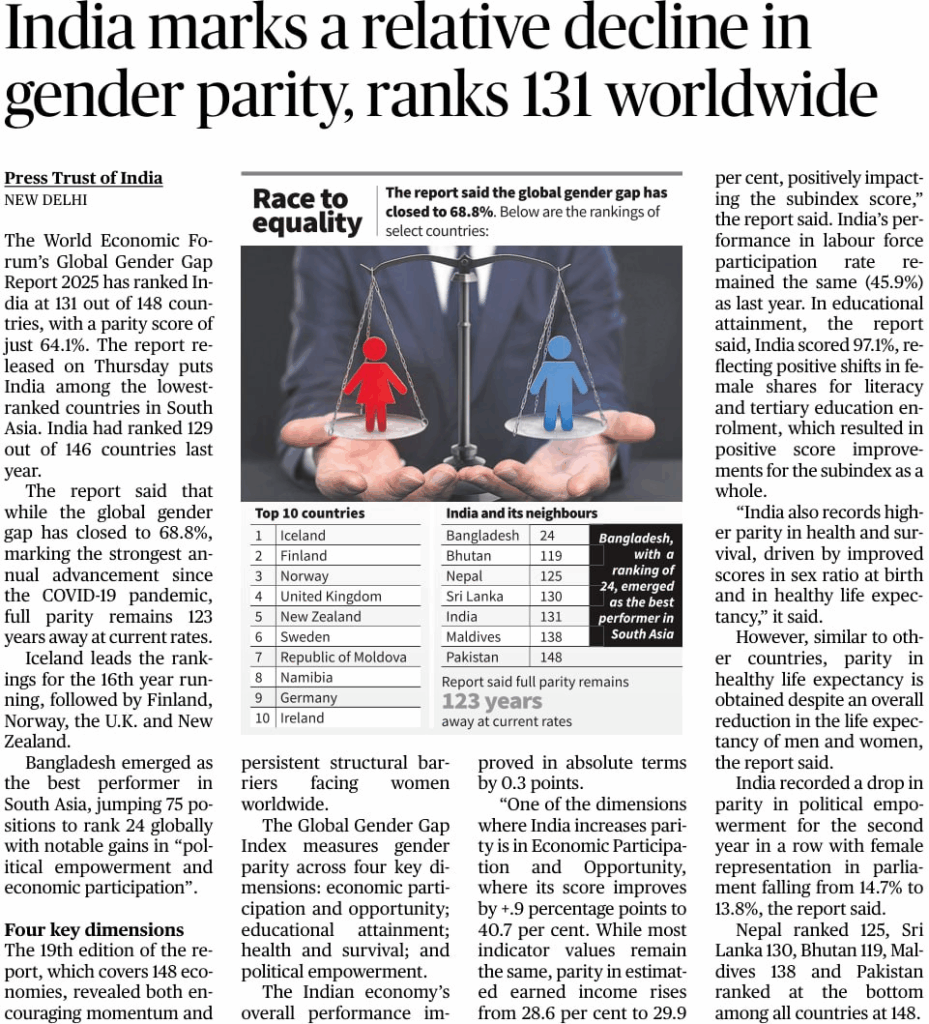
This marks a slight fall from its 2024 ranking of 129th out of 146 nations. Although India has made marginal improvements in certain domains like economic participation and educational attainment, its overall progress is slower compared to regional peers and the global average. Notably, Bangladesh has surged 75 positions to rank 24th, becoming the best performer in South Asia.
Background
The Global Gender Gap Index, first introduced by the World Economic Forum (WEF) in 2006, is a benchmarking tool that assesses gender-based disparities across four key dimensions:
- Economic Participation and Opportunity
- Educational Attainment
- Health and Survival
- Political Empowerment
The 2025 report, the 19th edition, covers 148 countries and provides insights into progress and regressions in closing the gender gap.
While the global gender gap has narrowed to 68.8%, at the current pace, full parity will take 123 more years. Iceland remains the top-ranked country for the 16th consecutive year, followed by Finland, Norway, the United Kingdom, and New Zealand.
- In contrast, South Asian nations like Pakistan (148) and the Maldives (138) trail at the bottom.
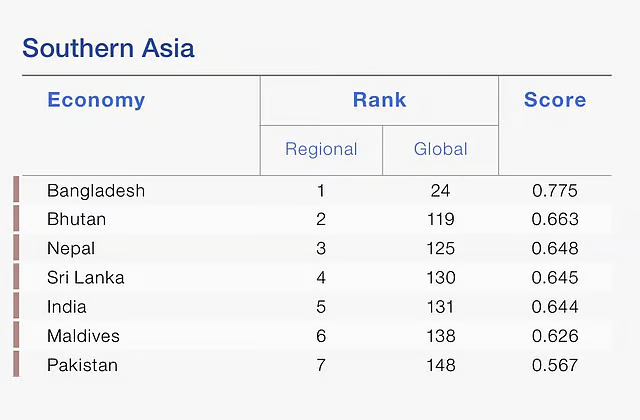
Features of the 2025 Global Gender Gap Report (India-Specific)
Economic Participation and Opportunity
- India’s score in this dimension improved by 0.9 percentage points to reach 40.7%, driven by a modest rise in estimated earned income parity (from 28.6% to 29.9%).
- However, the female labour force participation rate remains stagnant at 45.9%, indicating limited systemic change in job access or conditions for women.
Educational Attainment
- India achieved a high parity score of 97.1% in this area.
- Positive indicators include:
- Improved female literacy rates
Higher female enrolment in tertiary education - Despite these advances, gaps remain in the translation of educational gains into employment.
Health and Survival
- India has shown improved parity in this dimension.
Notable gains include:
- Better sex ratio at birth, suggesting a reduction in gender-biased prenatal practices
- Higher healthy life expectancy scores, although overall life expectancy for both men and women has declined.
Political Empowerment
- This continues to be India’s weakest area of performance.
- India has recorded a second consecutive year of decline in political representation.
- Women’s representation in Parliament dropped from 14.7% to 13.8%.
- Despite the 33% reservation for women in Parliament passed in 2023, implementation and enforcement remain a challenge.
South Asia Comparison
- Within the region, India ranks among the lowest, behind:
- Bangladesh (24)
- Nepal (125)
- Bhutan (119)
- Sri Lanka (130)
- Only Pakistan (148) and the Maldives (138) rank below India.
- Bangladesh’s leap of 75 places was attributed to stronger political and economic participation by women.
Challenges
Despite India’s structural and policy reforms, multiple entrenched barriers continue to hinder gender parity.
Labour Force Disparities
- Only about 25% of Indian women participate in the workforce, one of the lowest globally.
- Reasons include:
Unpaid care work burden
Social norms discourage female employment.
Limited formal job opportunities in rural and semi-urban areas
Income and Economic Autonomy
- The gender wage gap remains high.
- Women’s estimated earned income is still less than one-third that of men.
- Lack of financial literacy, asset ownership, and access to credit further impede economic autonomy.
Political Representation Deficit
- Despite the constitutional and legislative backing, women’s participation in governance remains symbolic.
- There is a disconnect between legal provisions like the Women’s Reservation Act and their actual implementation.
- Patriarchal party structures often sideline women candidates, using them as proxies or limiting their roles to token representation.
Education-Employment Disconnect
- Despite high female educational attainment, the education-to-work transition is weak.
- Cultural stigma, lack of transport and safety, and poor mentoring networks discourage post-education employment.
Persistent Health Disparities
- While the sex ratio at birth is improving, challenges such as:
- Malnutrition
- Maternal mortality
Access to reproductive healthcare continues to disproportionately affect women.
Intersectional Discrimination
- Marginalised groups -Dalit, Adivasi, minority, and rural women- face multiple layers of disadvantage.
- Gender inequality is compounded by caste, class, geography, and religion, making universal policy approaches less effective.
Way Forward
Strengthening Implementation of Legal Safeguards
- Fast-track the enforcement of the Women’s Reservation Act, ensuring genuine representation at all governance levels.
- Ensure gender-sensitive budgeting and accountability mechanisms in government schemes.
Boosting Economic Participation
- Promote inclusive labour policies like:
Flexible work hours
Safe transportation
On-site childcare
Encourage female entrepreneurship through targeted schemes such as Mudra Yojana, Stand-Up India, and Skill India Mission.
Bridging the Wage Gap
- Establish transparent mechanisms for pay audits.
- Enforce the Equal Remuneration Act, 1976, and update it to cover informal sector workers.
Reform in Education-Employment Pathways
- Create industry-academia partnerships to enhance women’s employability.
- Encourage STEM education for girls and foster mentorship programs to reduce dropout from the workforce.
Political Mentoring and Party Reform
- Institutionalise gender quotas within political parties.
- Promote capacity building for women politicians to break stereotypes and build long-term leadership.
Grassroots Change through Gender Sensitisation
- Engage boys and men in gender equality campaigns.
Leverage mass media and community leaders to shift deep-seated cultural norms.
Data Disaggregation and Policy Monitoring
- Improve the collection of gender-disaggregated data, especially in areas like unpaid labour and informal work.
- Use gender impact assessments for all major policy decisions.
Conclusion
India’s position in the 2025 Global Gender Gap Report is a sobering reminder that gender parity remains a distant goal. While certain subindices like education and health reflect steady progress, economic and political empowerment remain major stumbling blocks. To bridge this gap, India must move beyond symbolic reforms to embrace transformational gender-sensitive policies that are well-funded, intersectional, and community-rooted. Only then can India truly harness the potential of half its population and make meaningful strides toward a just, inclusive society.
Frequently Asked Questions (FAQ)
Q1. What is India’s rank and score in the 2025 Global Gender Gap Report?
Ans: India ranks 131 out of 148 countries in the 2025 edition, with an overall gender parity score of 64.1%. This marks a decline from its 2024 rank of 129 (out of 146 countries).
Q2. How does India compare with its South Asian neighbours?
Ans: India ranks lower than Bangladesh (24), Bhutan (119), Nepal (125), and Sri Lanka (130). Only Pakistan (148) and the Maldives (138) rank lower. Bangladesh’s strong performance is due to higher female political and economic participation.
Q3. What is the global status of gender parity according to the 2025 report?
Ans: Globally, the gender gap has narrowed to 68.8%, but full parity is still 123 years away. Iceland tops the list for the 16th consecutive year, followed by Finland, Norway, the UK, and New Zealand.
MAINS PRACTICE QUESTION
Question: Despite constitutional guarantees and progressive policies, India continues to lag in achieving gender parity, particularly in economic and political domains.” Critically analyse this statement in the context of the 2025 Global Gender Gap Report. Also, suggest policy measures to bridge the gender gap.
PRELIMS PRACTICE QUESTION
Q. About the Global Gender Gap Report 2025, consider the following statements:
- 1. India ranks higher than Sri Lanka and Bhutan in the overall gender parity index.
- 2. The Economic Participation and Opportunity subindex showed the highest improvement for India in 2025.
- 3. Despite constitutional provisions and a legislated 33% reservation, women’s representation in India’s Parliament declined in 2025.
- 4. Bangladesh’s improved ranking is primarily attributed to increased female representation in the judiciary.
Select the correct option:


